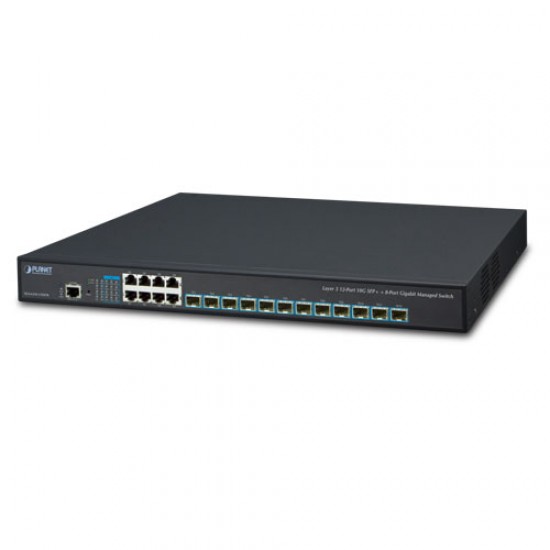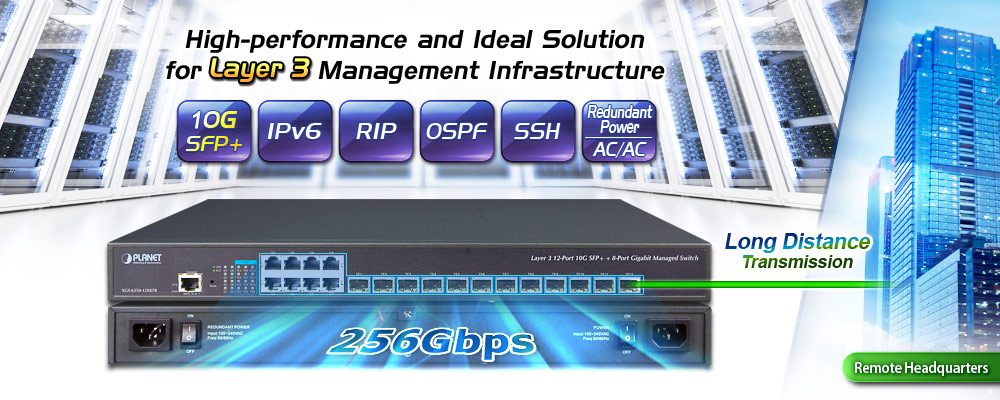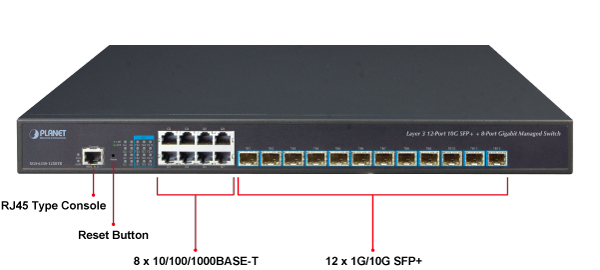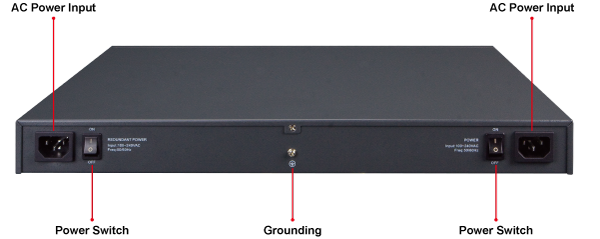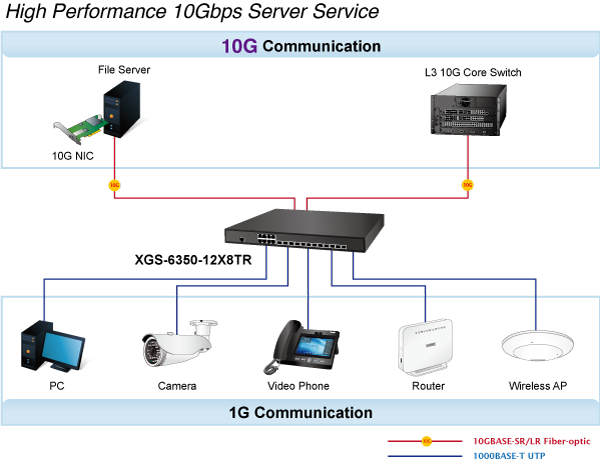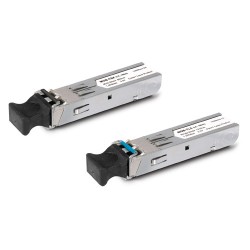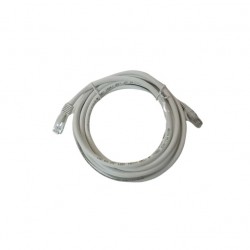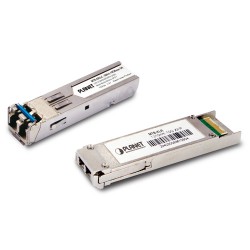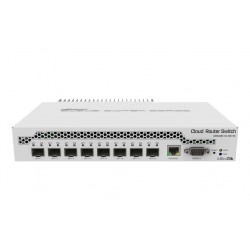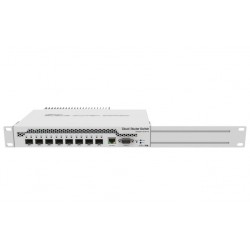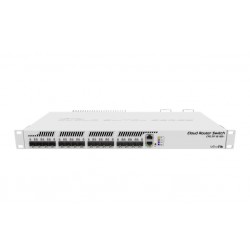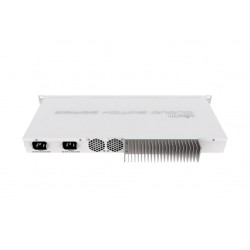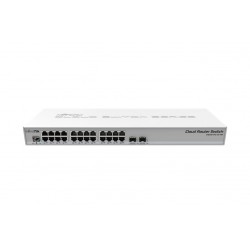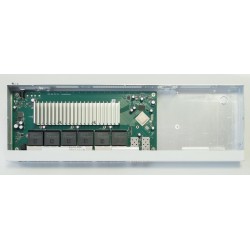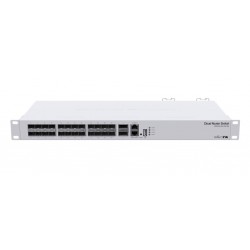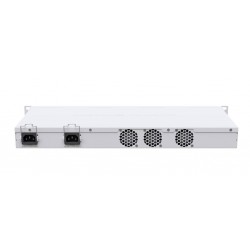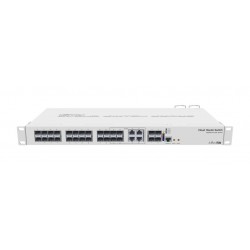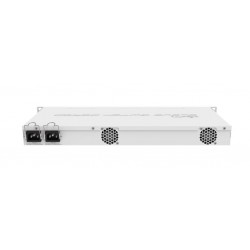PLANET Layer 3 12-Port 10G SFP+ + 8-Port 10/100/1000T Managed Switch with Dual 100~240V AC Redundant Power
- ΔΙΑΘΕΣΙΜΟΤΗΤΑ: In Stock
- Κωδικός Προϊόντος: XGS-6350-12X8TR
- UPC: PLA-00460
- EAN: 4711605283236
| Hardware Specifications | |
| Ethernet Ports | 8 1000BASE-T RJ45 auto-MDI/MDI-X ports |
| SFP+ Slots | 12 10GBASE-SR/LR SFP+ interface Compatible with 1000BASE-SX/LX/BX SFP transceiver |
| Console | 1 x RJ45-to-DB9 serial port (9600, 8, N, 1) |
| Reset Button | Reset to factory default |
| Switch Architecture | Store-and-forward |
| Switch Fabric | 176Gbps/non-blocking |
| Switch Throughput | 132Mpps |
| Address Table | 32K MAC address table with auto learning function |
| Shared Data Buffer | 3MB |
| Flow Control | Back pressure for half duplex IEEE 802.3x pause frame for full duplex |
| Jumbo Frame | 9KB |
| LED | System: PWR, SYSPorts: 10/100/1000T RJ45 Port: LNK/ACT 1/10G SFP+ Slot: LNK/ACT |
| Dimensions (W x D x H) | 442.5 x 315 x 44 mm, 1U height |
| Weight | 4178g |
| Power Consumption | 55 watts/187.66 BTU (maximum) |
| Power Requirements | AC 100~240V, 50/60Hz |
| Fan | 2 |
| Management Function | |
| System Configuration | Console, Telnet, SSH, Web browser, SNMP v1, v2c and v3 |
| Management | Supports both IPv4 and IPv6 addressing Supports the user IP security inspection for IPv4/IPv6 SNMP Supports MIB and TRAP Supports IPv4/IPv6 TFTP Supports IPv4/IPv6 NTP Supports RMON 1, 2, 3, 9 groups Supports the RADIUS authentication for IPv4/IPv6 Telnet user name and password Supports IPv4/IPv6 SSH The right configuration for users to adopt RADIUS server’s shell management Supports CLI, console, Telnet Supports SNMPv1, v2c and v3 Supports Security IP safety net management function: avoid unlawful landing at non-restrictive area Supports Syslog server for IPv4 and IPv6 Supports TACACS+ |
| Layer 3 Function | |
| Routing Protocol | Static routing, RIP and OSPF |
| Routing Table | IPv4: 32K IPv6: 8K |
| Multicast Routing Protocol | PIM-DM and PIM-SM PIM-SSM MSDP |
| DHCP | DHCP client DHCP server, default-route |
| VRRP | Configure VRRP in interface VLAN; VRRP priority; VRRP standby; VRRP track |
| Load Balancing | Use of equivalent routing, the correct load balancing function (by flow) |
| Layer 2 Function | |
| Port Configuration | Port disable/enable Auto-negotiation 10/100/1000Mbps full and half duplex mode selection Flow control disable/enable Bandwidth control on each port Port loopback detect |
| Port Status | Display each port’s speed duplex mode, link status, flow control status and auto negotiation status |
| VLAN | 802.1Q tag-based VLAN, up to 4K VLAN entries 802.1ad Q-in-Q (VLAN stacking) GVRP for VLAN management Private VLAN Edge (PVE) supported Protocol-based VLAN MAC-based VLAN IP subnet VLAN |
| Bandwidth Control | TX/RX/both |
| Link Aggregation | IEEE 802.3ad LACP/static trunk Supports 32 groups with 8 ports per trunk group |
| QoS | 8 priority queues on all switch ports Supports strict priority and Weighted Round Robin (WRR) CoS policies Traffic classification: - IEEE 802.1p CoS/ToS - IPv4/IPv6 DSCP - Port-based WRR |
| Multicast | IGMP v1/v2/v3 snooping Querier mode support MLD v1/v2 snooping Querier mode support Multicast VLAN Register (MVR) |
| Access Control List | Supports Standard and Expanded ACL IP-based ACL/MAC-based ACL Time-based ACL Up to 1K entries |
| Bandwidth Control | At least 64Kbps stream |
| Security | Port isolation Supports IP + MAC + port binding Identification and filtering of L2/L3/L4 based ACL Defend against DOS or TCP attacks Suppression of broadcast, multicast and unknown unicast packet DHCP Snooping, DHCP Option 82 Command line authority control based on user levels |
| Authentication | IEEE 802.1x port-based network access control AAA authentication: TACACS+ and IPv4/IPv6 over RADIUS |
| SNMP MIBs | RFC 1213 MIB-II RFC 1215 Internet Engineering Task Force RFC 1271 RMON RFC 1354 IP-Forwarding MIB RFC 1493 Bridge MIB RFC 1643 Ether-like MIB RFC 1907 SNMPv2 RFC 2011 IP/ICMP MIB RFC 2012 TCP MIB RFC 2013 UDP MIB RFC 2096 IP forward MIB RFC 2233 if MIB RFC 2452 TCP6 MIB RFC 2454 UDP6 MIB RFC 2465 IPv6 MIB RFC 2466 ICMP6 MIB RFC 2573 SNMPv3 notification RFC 2574 SNMPv3 VACM RFC 2674 Bridge MIB Extensions |
| Standard Conformance | |
| Regulatory Compliance | FCC Part 15 Class A, CE |
| Standards Compliance | IEEE 802.3 10BASE-T IEEE 802.3u 100BASE-TX IEEE 802.3z Gigabit 1000BASE-SX/LX IEEE 802.3ab Gigabit 1000BASE-T IEEE 802.3ae 10Gb/s Ethernet IEEE 802.3x flow control and back pressure IEEE 802.3ad port trunk with LACP IEEE 802.1D Spanning Tree Protocol IEEE 802.1w Rapid Spanning Tree Protocol IEEE 802.1s Multiple Spanning Tree Protocol IEEE 802.1p Class of Service IEEE 802.1Q VLAN tagging IEEE 802.1X port authentication network control IEEE 802.1ab LLDP RFC 768 UDP RFC 783 TFTP RFC 791 IP RFC 792 ICMP RFC 2068 HTTP RFC 1112 IGMP v1 RFC 2236 IGMP v2 RFC 3376 IGMP v3 RFC 2710 MLD v1 FRC 3810 MLD v2 RFC 2328 OSPF v2 RFC 1058 RIP v1 RFC 2453 RIP v2 |
| Environment | |
| Operating | Temperature: 0 ~ 60 degrees C Relative Humidity: 10 ~ 85% (non-condensing) |
| Storage | Temperature: -40 ~ 80 degrees C Relative Humidity: 5 ~ 95% (non-condensing) |

